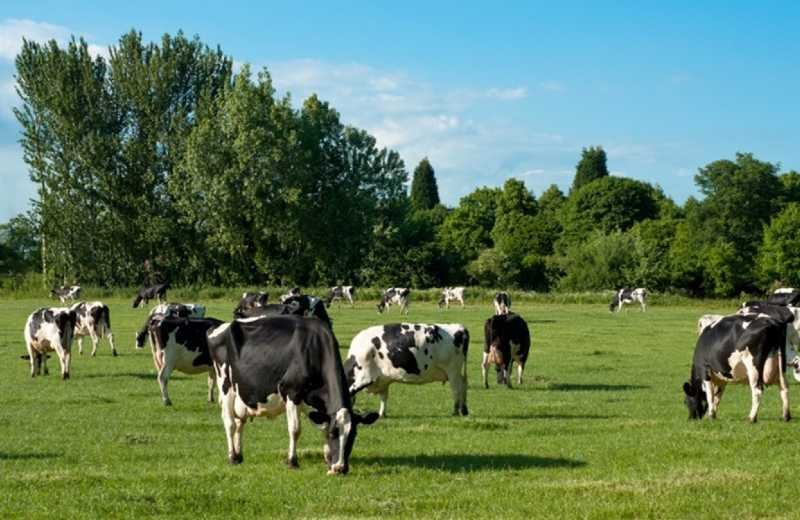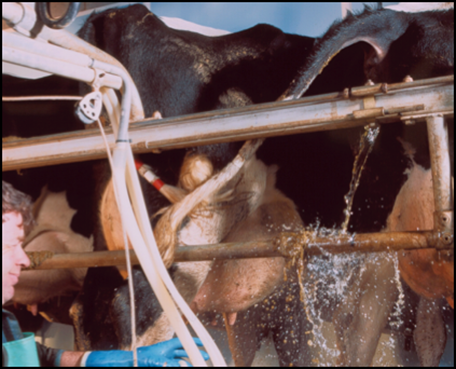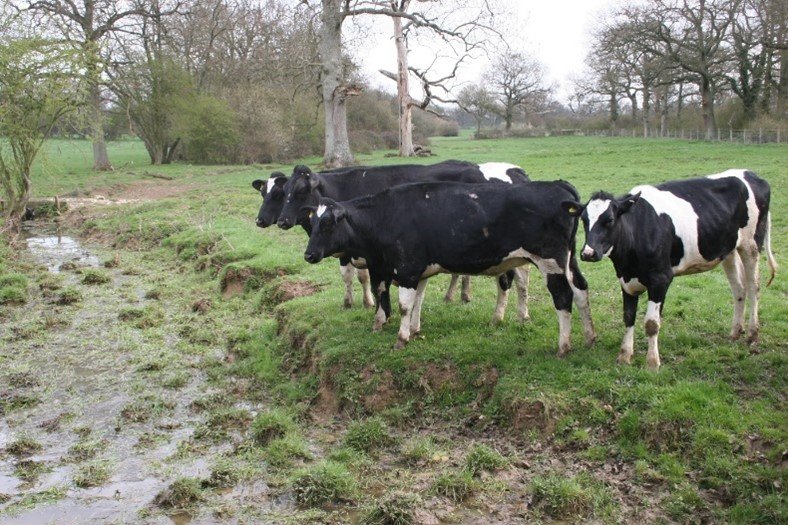Will you be Vaccinating your Cattle Against Leptospirosis this Spring?
It’s the New Year, the days are short, cold, and Spring may seem some way off, but now is the ideal time to start planning for Spring turn out. With this comes the decision about whether to vaccinate your cattle against leptospirosis, so it’s worth reminding ourselves of the facts.

The Disease
Leptospirosis is caused by a bacteria called Leptospira Hardjo which localises in the kidneys and spreads via urine. Transmission occurs mainly from June to October when cattle are out at grass; housed cattle excrete less, possibly due to increased urine acidity from feeding silage.
Once infected, leptospires colonise the kidneys. Infected cattle then shed leptospires in their urine for days or even years, acting as important reservoirs of infection within the herd.
Impact of Leptospirosis
Leptospira Hardjo infection can affect fertility and milk production.
‘Flabby Bag’ is the colloquial name given to the effects on milk production. The udder becomes soft and flabby, and milk production drops off dramatically for 5-6 days. If milk drop occurs before peak lactation, that peak will never be achieved.
Abortion can occur, usually 3-12 weeks after infection, with most abortions in the last 3 months of pregnancy. Alternatively, infection can result in the birth of premature or weakly calves.
Infertility or subfertility can result from the leptospires causing inflammation in the uterus, which in early pregnancy can lead to early embryonic death1. The cow is seen returning to service at regular or irregular intervals. One study showed a conception to first service in clean cows of 46%, compared to just 30% in infected cows2. For beef suckler herds this will impact the ability to achieve the ideal of 65% of cows calving in the first 3 weeks of the calving period. In dairy herds the potential losses have been estimated at 0.91-1.41ppl2

Importantly Leptospira Hardjo is also a zoonotic disease, which means humans can be infected.
Dairy farmers handling and milking cows are particularly at risk of coming into contact with infected urine in the parlour.
Risk Factors for Leptospirosis
Herds where cattle are bought in, co-graze with sheep, have access to shared watercourses or where bulls rather than AI is used, are all at increased risk of Leptospira hardjo infection. In one case, 12 cows in a 160-cow dairy herd experienced a sudden onset drop in milk production, with no other clinical signs. The affected animals had access to a stream shortly before the first case was observed and this was considered to be the source of the infection with Leptospira hardjo3.

Control
Biosecurity measures can help reduce the risk of exposure to infection, or of bringing leptospirosis into a clean herd, but as leptospirosis is widespread amongst UK herds, in practical terms, vaccination provides the most reliable means of protection4.
There are 2 vaccines available in the UK. Both require an initial primary course consisting of 2 doses given 4-6 weeks apart, followed by an annual booster. As transmission occurs mainly from Spring onwards when cattle are turned out to grass, heifers receiving their first vaccine course, or herds which have not been vaccinated before, will need to start their vaccine programme at least 6 weeks pre turnout, hence the need to start planning now.
I no longer see disease; do I need to continue vaccinating?
It may be tempting to stop vaccinating as a way of reducing costs, especially when the diseases you are vaccinating against are no longer present; which is what happens when disease control programmes are working well. In such cases, it’s easy to forget the impact and losses from those diseases. Stopping vaccination is certainly a quick and easy way to reduce farm expenditure, but it will result in herd immunity waning over time, leaving animals vulnerable to re-infection especially if bullet proof biosecurity can’t be achieved (likely on the majority of farms). Any cost saving needs to be balanced against the risk from a recurrence of that disease, and each year cases of leptospirosis are reported in herds where vaccination has lapsed, usually as a cost saving measure.
Disease prevention plans should always be based on a comprehensive risk management approach for your herd and discussed thoroughly with your vet. Now is the ideal time to have that conversation to ensure you are ready for turnout.
1. SAC Technical Note: Leptospira hardjo infection in cattle
2. Williams World Buiatrics 1996
3. SAC C VS Disease Surveillance Report (2015) Milk drop due to leptospirosis in dairy cows. Vet Rec, Vol. 176 (10), pp. 247-50
4. Moredun.org.uk- Moredun Foundation Newsheet Volume 3, No 20 (Aug 2003)Further information is available from the Summary of Product Characteristics or contact your veterinary surgeon or Zoetis UK Ltd, Birchwood Building, Springfield Drive, Leatherhead, Surrey, KT22 7LP • www.zoetis.co.uk • CustomerSupportUK@zoetis.com • 0845 300 8034 Use medicines responsibly (www.noah.co.uk/responsible) Produced Jan-2022 • MM-18575
- 1st March 2022


